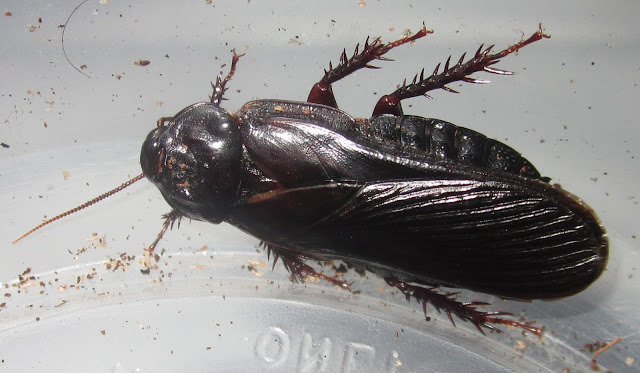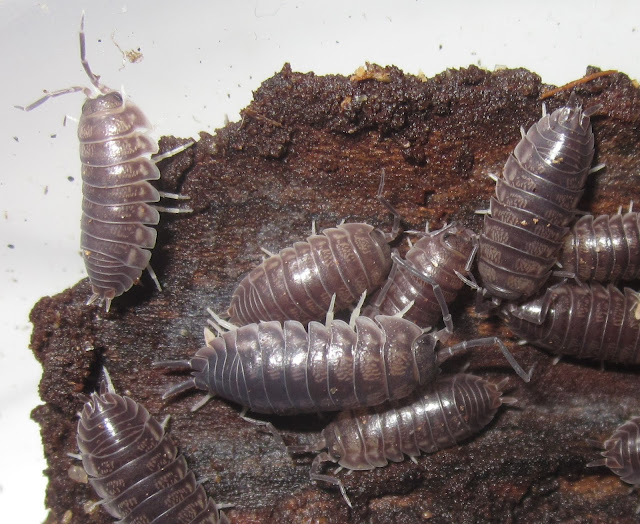Both my
Ancaudellia hamifera AND my new
Ancaudellia s. serratissima have given birth this month, which is awesome! 😁 Been waiting on more babies from the
hamifera for a while now, but was surprised to find babies in the
serratissima bin already! Considering the relatively large size of the
serratissima babies compared to the adults, pretty sure they only have broods of 6-8 nymphs at most. Still, so glad they've bred for me already, looking forward to watching the colony grow, and spreading this species around in the US hobby! 😄
Speaking of serratissima, some of the larger nymphs in my starter culture have matured recently, so I was able to get some pictures of some fresh adults:
Cute species, quite similar to hamifera in morphology, but WAY smaller. 😂
Bit of a random update, but my
Cylisticus convexus "Eagle, ID" have been doing quite well. Truth be told, they were the only species up on my
For Sale List that didn't have any pictures, because the only pictures I've taken of this species were during the infancy of this blog, and all piss poor quality... 😅 So, I decided to take some new pictures of my current stock, not the BEST photos I could have taken, but definitely WAY better than my older pics of this species. 😆
Here they are:
One of the neater backyard isopods IMO, I really like their unique morphology and subtle patterning. 😊
Now, for some sad Perisphaerus sp. "Kota Kinabalu" news... I'm down to three nymphs, and an old WC adult female. 😢 I had four nymphs, one of which was a subadult male, that I had HOPED would mature soon, mate with the old WC female, and perhaps trigger her to incubate another brood and give birth to more babies (truth be told, I have NO idea if this female is one of the ones who gave birth for me previously, or if she's a virgin...).
Now, said subadult male actually DID mature a couple of weeks ago... And died as a teneral adult, despite looking perfectly healthy externally. 😭 Not sure what happened exactly, but I assume it was just sickly... After all, every one of my nymphs were born from stress broods, as a result their survival rate has been abysmal, and they've been plagued will all sorts of random health issues.
So, now I've got a pre-subadult female, pre-pre-subadult female, a pre-subadult or pre-pre-subadult male and that old WC adult female... It's a long shot, but I could still potentially get a colony established... Buuuut, might just need to get another starter colony one day instead. 😕
Anyways, here are a few "meh" quality pictures I took of the adult female the other day:
Kind of a sour turn for this species, I suppose I'll just to wait and see what happens to them.
Lastly, on a happier note, my second, runty female Macropanesthia rhinoceros has finally matured! 😁 She's still teneral ATM, but in a few days I'll toss the adult male back into their setup and let him mate with the younger female, and then both of my gals will be fertilized! 😄 The first female is already pretty plump, and hopefully starting to incubate a brood! 🤞
Well, that does it for this post, thanks for reading, hope everyone enjoyed, stay safe, and I'll see you all next time! 😉




























































